
前言
前言 Foreword
丹育猪以高产著名于世,但由于猪场建设、饲养管理等诸多方面的挑战,让丹育猪在中国的生产性能未能达到预期,但丹育种猪在中国养猪业的受青睐程度仍越来越高。猪译馆特收集整理了一系列丹育相关资料,目前正在转载由喜肉科技携手英联饲料和华扬种猪联合推出的丹麦养猪研究中心制作的丹育《配种管理手册》,敬请关注。
编者的话 Editor’s Note
配种是新一轮生产的开始,配种质量会直接影响受胎率、分娩率、产仔数、断奶数等一系列关键的KPI。因此配种舍的正确管理有助于提高和维持母猪高产、稳产。本手册详细讲解了不同生产模式下查情和配种的各种技巧,其中很多章节图文并茂可以直接作为SOP使用。
16. 体况
Body Condition
16.1
16.1妊娠母猪主要根据体况来饲喂
Pregnant Sows Should Be Fed Primarily By Body Condition
配种4周后转入妊娠舍的母猪按照正常的饲喂曲线饲喂。
By inserting in the gestation unit 4 weeks after mating, the group is placed on the normal feed curve.
如果将较弱的猪群以中间体况为标准分群,母猪的饲喂应分别按照曲线A和B。
If the weakly group is split down the middle the sows are fed after curve A and B.
过肥或过瘦的母猪应根据曲线1或3进行单独饲喂。
Different sows should be fed individually according to curve 1 or 3.
曲线1:体况肥的母猪
Curve 1: Fat sows
曲线A:体型大的母猪
Curve A: Big sows
曲线2:体况适中的母猪
Curve 2: Average sows
曲线B:体型小的母猪
Curve B: Small sows
曲线3:体况瘦的母猪
Curve 3: Skinny sows
曲线4:后备母猪
Curve 4: Gilts

体况不好的母猪要转入备用的圈舍。
Sows that come in poor body condition are moved to the spare unit.
肥的母猪分娩时更易出现问题,因此需要更多的助产。且它们的腿部疾病也会更多,从而造成淘汰率增加。
Fat sows are more likely to get farrowing problems and thus greater need for farrowing assistance.Furthermore, they have more leg fractures and thus higher mortality.
在冬季,由于温度较低,饲喂曲线应普遍上升。
In winter season the curves are regulated upwards due to the lower temperature.
1. 产房中肥的母猪比普通体况的母猪吃的少,从而导致断奶仔猪体重偏小。
Fat sows eat less in the farrowing unit than sows in normal body condition. This gives small pigs at weaning.
2. 过肥或过瘦的母猪的总饲料消耗量比体况稳定的母猪多。(大约100 个饲料单位/胎)
Sows which vary in body condition, have greater total feed consumption than sows with stable body condition (approx. 100 FU/litter)
3. 瘦弱的母猪有肩伤、腿部疾病和返情的概率比较大。
Skinny sows have greater risk of shoulder wounds, leg problems and returning.
16.2
16.2补充说明: 体况
Additional Comments: Body Condition
如果经产母猪和后备母猪在配种后立即转入妊娠舍,在开始的4周里这些栏位要锁起来(除了英国)。这样可以单独饲喂母猪,保证母猪在配种4周后的群养前,能达到一致的体况。实验表明,配种后开始的4周里每天饲喂3.8个饲料单位的饲料对较瘦母猪的窝产仔数有正面的影响,但对后备母猪会产生负面的影响。母猪由于哺乳失重而出现的能量不平衡会造成流产。母猪在生完第4胎后才结束生长,所以年轻的母猪需要给予额外的饲料。
If the sows and gilts are placed in the gestation unit just after mating, the boxes are locked in the first 4 weeks (except UK). This makes it possible to feed the animals individually, thus ensuring a uniform body condition when the animals are loosened 4 weeks after mating. Experiments have shown a positive effect on the litter size with skinny sows at a high feed strength 3,8 FU per day in the first 4 weeks after mating. In gilts, there is a negative impact of high feed strength in these 4 weeks. A possible weight loss from the farrowing unit should urgently be obtained since sows in negative energy balance may abort. The sows are only fully grown after 4th litter, so therefore young sows should receive extra feed.
并非所有的母猪都有相同的饲料转化率。特别是产房中非常瘦弱的母猪,即使给它们额外的饲料,它们也很难恢复到相同的体况。因此,要对母猪的体况进行检查,调整瘦的和肥的母猪的饲料量。饲喂曲线A适用于略高于适中体况的母猪。饲喂曲线B适用于年轻且瘦的母猪。良好的体况管理是饲料采食的关键,因为母猪的体重每增加1公斤,就需要采食更多的饲料。
Not all sows have the same feed conversion. Especially sows that are very emaciated from the farrowing unit, can be difficult to obtain in the same body condition again, even if they are given extra feed. Therefore should the sows’ body condition be checked and skinny and fat sows feed quantity should be regulated. Feed curve A meets sows, which is slightly above average. Feed curve B meets young and skinny sows. Good body condition management is critical for the feed consumption, since sows have a high feed consumption per kg weight gain.
过肥或过瘦的母猪应根据曲线1或3进行单独饲喂。
Different sows should be fed individually according to curve 1 or 3.
胎儿大部分的重量是在妊娠的最后几周增长的。因此,饲喂量在该期间要增加到3.5-4.0个饲料单位/天,但这不适用于肥的母猪。
Fetus have by far the largest growth in the last weeks of gestation. Therefore, the feed strength should be increased in this period from 3,5 to 4,0 FU per day, however not for fat sows.
给猪群饲喂液体饲料时,最好每天饲喂两次,因为饲料中的干湿料之比至少为1:4,而母猪无法适应如此大的饲喂量。最重要的是所有的饲料阀门最好可以依次立即打开落料。如果做不到这一点,母猪会争着去先放料的栏里吃,这会引起猪舍内不必要的躁动。给猪群饲喂干饲料时,建议一天一次,并且每天投喂一些秸秆。
In herds with liquid feeding, it is advantageous to feed the sows twice a day as sows physically can not accommodate the large feed quantities when the ratio between dry:wet is 1:4 or more. It is important for the pens function that all valves in the pen feed immediately after each other. Failing this, the sows will compete to get into the boxes that are fed first, which creates unnecessary anxiety in the pen. In herds with dry feed one daily feed is recommended, when there is assigned straw daily.
温度对母猪的采食量有很大的影响。而瘦的母猪比肥的母猪的脂肪层薄,因此需要更多的饲料来产热。
Temperature has great influence on the sows feeding needs. Furthermore, skinny sows have a thinner layer of fat than fat sows and therefore has a bigger need for feed to produce heat.
温度下降需要额外的饲料补充猪饲料单位:
Extra feed by decreasing temperature Fuso:
17. 妊娠鉴定
Pregnancy Test
17.1
17.1每日发情鉴定
Daily Heat Control
1. 每天检查所有圈舍内是否有发情母猪。
Every day, you check for sows in heat in all units.
2. 当母猪安静下来时,工作人员把手放入衣服口袋内到圈舍内巡视一圈(尽可能少惊扰母猪),观察母猪。
Go for a round in the units with your hands in your pockets and observe the animals, when they have calmed down.
3. 焦躁不安的母猪可能处于发情期。
Sows that are restless could be in heat.
4. 如果一头母猪爬跨另一头母猪,它可能处于发情前期。标记该母猪,然后在接下来的3天里进行发情鉴定。
If a sow mounts another sow, it could be in pre heat. Mark the sow and check her for heat the next 3 days.
5. 被爬跨的母猪可能正处于发情期。
A sow being mounted could be in heat.
6. 实施发情鉴定的“5个要点”,完成骑背测试,如果它保持不动,说明它处于发情期并且可以授精。
Complete the 5-point-plan and finish with the riding test. If the sow stands still when you sit on her, she is in heat and can be inseminated.
7. 把发情母猪转移到配种舍,从而妊娠舍里可以保持安静。
Move sows in heat to the mating unit, so there will be peace in the gestation unit.
除了日常发情鉴定,在发情鉴定和妊娠鉴定上还有3个关键点,且每一个都体现在日常工作中。
In addition to daily heat control, there are three elements in the control of oestrus and pregnancy. Everyone should be a part of the routines.
用公猪诱情可以较早的发现发情母猪。(参见18 –扫描技术)
Control with the boar may reveal sows in early oestrus. (See 18 – Scanning technique )
妊娠鉴定(扫描)可在第24天进行,可疑母猪可在一个星期内再次扫描。
Pregnancy control (scanning) can be performed from day 24 and doubtable sows are scanned again within a week.
在分娩前约3周时接种疫苗,可以通过目测来评估母猪是否怀孕。
At vaccination approx. 3 weeks before farrowing, it is assessed visually if the sows are pregnant.
骑背测试
Riding test
阴唇红肿的母猪,旁边是阴唇正常的母猪
Sow with swollen labia next to a sow with normal labia。
17.2
17.2不当的或不进行发情和妊娠鉴定会导致
Inadequate Or No Oestrus- And Pregnancy Control Leads To
1. 返情母猪和空怀母猪没有被鉴别出来。这会导致群体数量持续波动。
Returners and empty sows are not being identified. They create turbulence in the group with slipping and returning to come.
2. 母猪年产胎次和年断奶仔猪数减少。空怀母猪导致非生产天数增加。
Fewer litters and thus fewer weaners per sow per year.
3. 每一非生产天数的成本为20丹麦克朗。
Empty sows give non-productive days. One non-productive day costs 20 Danish krones.
爬跨
Mounting
17.3
17.3补充说明: 妊娠鉴定
Additional Comments: Pregnancy Test
通过每天的发情鉴定可以及时的发现返情母猪。30-50%的返情母猪在配种后的3周内被发现,其余的(50-70%)在其它时间被发现。因此,每天的发情鉴定很重要。
By implementing a daily heat check you detect RETURNERS in time. 30-50 % of the returners are detected 3 weeks after their mating day, the rest (50-70 %) are found in the interim period. Therefore, heat check is necessary every day.
发情迹象:
Oestrus signs are:
1. 母猪让其它母猪或公猪爬跨。
The sow let other sows and the boar mount her.
2. 母猪跟着工作人员走。
The sow follows the manager around the pen.
3. 母猪异常活跃。
The sow is hyperactive.
4. 母猪寻找公猪。
The sow seeks the boar.
5. 母猪出现在电子母猪饲喂器未吃料的清单上。
The sow may act on the remnant list of ESF.
6. 母猪的阴唇肿胀。
The sow has swollen labia.
7. 母猪发出“低吟”声。
The sow “buzz”
公猪可以帮助发现发情母猪,但是公猪不能发现所有的发情母猪。
The boar can be a help to find the oestrus sows, but the boar doesn’t discover all the oestrus sows.
1. 公猪和母猪有“一见钟情”的现象。
Both the sow and boar have preferences (“love at first sight”).
2. 年轻的和等级低的母猪发情症状不明显。
Young and low ranking sows do not dare to show oestrus.
公猪可以作为发现空怀母猪的快速工具,但具有不确定性。
The boar should be regarded as a tool to find empty sows quickly. The boar is not a certainty.
许多空怀母猪不是周期性的,因此,不能通过查情来发现,只能通过扫描来发现。
Many empty sows are not in cycle. Therefore, one can not find them by heat check. They can only be found by scanning.
扫描不一定要在配种第24天后进行,但如果扫描的太早,结果具有不确定性,因为此时较难在屏幕上观察到胚胎。如果扫描确认母猪空怀,要立刻将其转入配种舍。
Scanning can not with certainty be made from day 24 after mating. If the scan is done too early, the results is uncertain since the embryos are difficult to see on the scanner screen. If the sow scanned empty she is immediately moved to the mating unit.
如果对扫描结果有疑问,可以在母猪身上做明显的标记,记录下母猪的圈舍和号码。下一次扫描时应该能得到一个准确的结果。
If you have doubt about the outcome the sow is clearly marked and number and section is noted. At the next scan there should be achieved a safe outcome.
如果对母猪进行第二次扫描时,发现是空怀或仍不确定的,则将其转移到配种舍。
If the sow empty at the second scan, or you are unsure, the sow is moved to the mating unit.
对所有不能确定是否怀孕的母猪,要在一个星期内再次扫描。空怀母猪要立即转移到配种舍,这会让母猪的发情更加显著。
All sows where there is doubt about pregnancy, is scanned again within a week. Empty sows are immediately moved to the mating unit, which often triggers a more pronounced heat.
参见18 –扫描技术
See 18 – Scanning technique
扫描母猪的同时要评估其体况,如果需要,要及时调整饲喂曲线。
While scanning the sows are assessed on body condition and the feed curve is adjusted if necessary.
接种疫苗(妊娠第90天)时,可以评估母猪是否怀孕。如果有疑问,立即进行扫描。
By vaccination (day 90), it is estimated if the sows are pregnant. By doubt they are scanned.
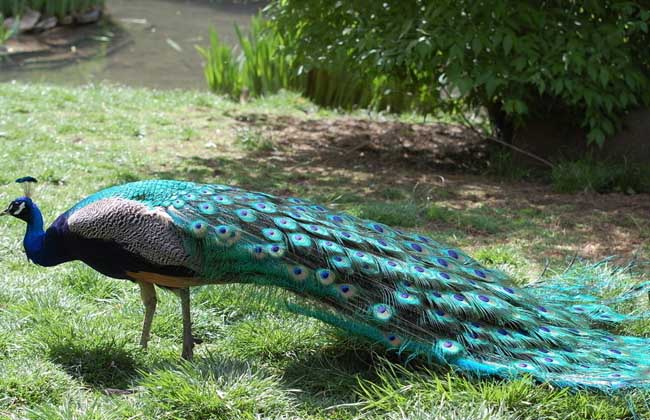
孔雀全身都是宝,随着孔雀大规模地饲养,使越来越多的人们可以享受到 "凤凰"肉的滋味,孔雀肉具有较高的营养食用价值。孔雀产肉多,全净膛屠宰率达80%以上,其肉质细嫩,孔雀肉为高蛋白,低脂肪的健康食品,其蛋白质含量高达23.2%,远远高于一般禽类,比田鸡、蛇、甲鱼,龙虾和石斑鱼都高,富含20多种氨基酸及维生素和微量元素,脂肪含量仅为0.8%。孔雀还具有药用价值,我国明代替名的药学家李时珍在《本草纲目》中记载,孔雀辟恶,能解百毒,孔雀肉、血有解毒的功效,主治解药毒、蛊毒;粪便亦有解毒利水的功...
12-03
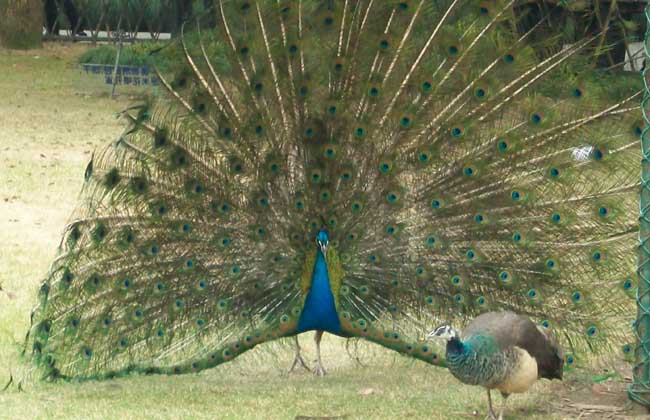
孔雀舍勤打扫,及时清除粪便、污物及灰尘。以免降低消毒质量。喷雾消毒时,喷口不可直射蓝孔雀,药液浓度和剂量要掌握准确,喷雾程度以地面、墙壁、屋顶均匀湿润和蓝孔雀体表稍湿为宜。水温要适当,防止孔雀受冻感冒。消毒前应关闭所有门窗,喷雾15分钟后要开窗通气,使其尽快干燥。进行育雏室消毒时,事先把室温提高3~4℃,免得因喷雾降温而使雏蓝孔雀挤压致死。种类消毒剂交替使用,每月轮换一次。孔雀群接种弱毒苗前后3天内停止喷雾消毒,以免降低免疫效果。...
12-03
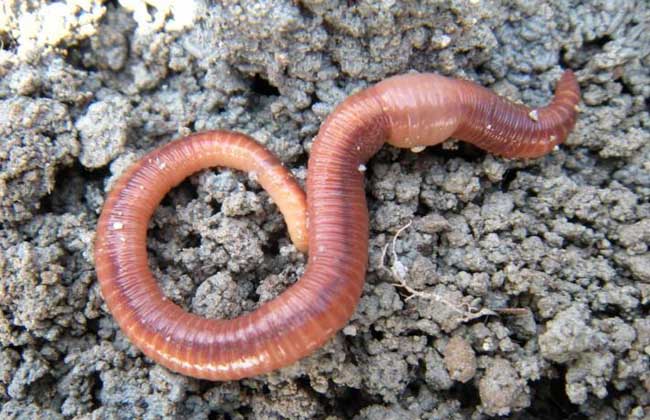
农村如何利用沼渣饲养蚯蚓?沼渣养殖蚯蚓操作简单、成本低、效益高,主要有以下几个步骤:沼渣处理沼渣捞出后,摊开沥干2天,然后与20%铡碎稻草、麦秆、树叶、生活垃圾拌匀后平置坑内,厚度20-25厘米。蚯蚓放养应均匀移入蚯蚓,并保持65%湿度。场地管理蚯蚓生活适宜温度为15℃一30℃,高温季节可洒水降温,室外养殖不可曝晒,应有必要蔽阴设施。气温低于12℃时,覆盖稻草保暖,保持65%湿度。经常分堆,将大小蚯蚓分开饲养。防止伤害预防天敌,如水蛭、蟾蜍、蛇、鼠、鸟、蚂蚁、螨等,避免农药、工业废气为害。养殖环境养殖场所...
12-03
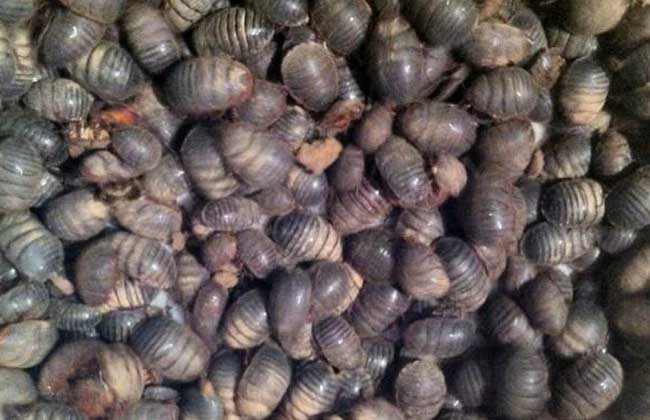
土元喜欢生活于阴暗,潮湿,腐殖质的疏松土壤中,野生状态下的土元多生活于灶间、墙角、落叶树林下的腐殖质土壤及碎石间,入土深度可达0.5-0.6米。白天入土休息,傍晚开始出来活动、觅食、交配。夜晚7-12时是土元活动的盛期。土元为杂食性动物,喜食多种蔬菜叶、根、茎、花、多种树叶及各类杂粮,也吃动物性残渣、粪便等。野生状态下的土元生长周期为2.5-3年。5-11月为土元的活动期,气温在13℃以下入土休眠,不食不动、抗寒冷,-10℃时仍冻不死。耐高温,40℃时仍热不死,38℃以上吃食减少,不入土,活动频繁。温度在...
12-03
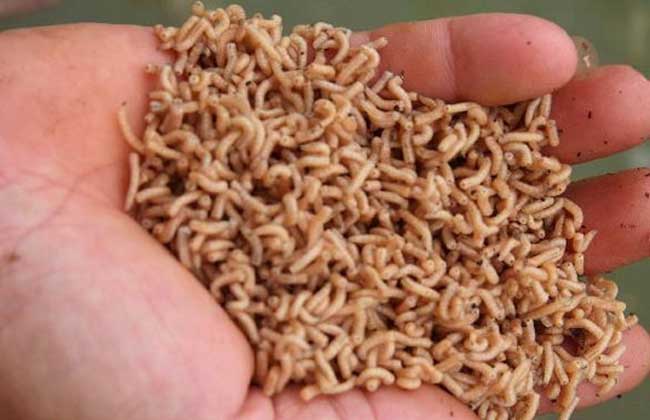
蝇蛆的养殖可用砖砌边高为20厘米,面积为1-3平方米的育蛆池, 或用竹木搭架用塑料盘育蛆,一个直径为50厘米的塑料盘可育蛆1.5公斤仅需3公斤麦麸, 养3-4天即可收集利用,养蛆料的来源较广,不同蛆料的成本有所高低,可以合理选择。麦麸营养成份较高,价格也稍高,一般用来繁殖蝇蛆,价格低廉的酒槽、豆渣等可用来作商品蛆的料。如用麦麸作蛆料,一般1公斤麦皮可生产0.4-0.5 公斤蝇蛆(视麦麸的质量而定),使用时需加水抖匀,干湿度以手捏出水,触碰即散为宜。如果用酒槽、豆渣等半干湿料,使用时不必加水即可培养。蝇蛆的...
12-03